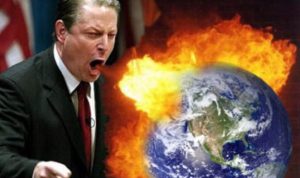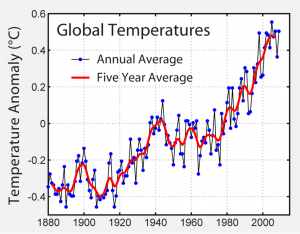Climate Change- Global Warming
By Michael FaginGeneral Info, Historical Weather DataWith 0 comments
Global Warning is one part of Climate Change
Climate change and global warming are used as interchange terms but they are not. Global warming is just one type of climate change. Climate and climate change is affected by everything from the amount of sunlight, cloud cover, atmospheric aerosols, volcanic activity and much more. Global Warming is just part of the climate that is changing.
A history of our climate is very instructive. Geologic studies indicate that there have been at least 33 periods of glaciations with a corresponding 33 periods of interglaciation or periods when glaciers have been at the lowest point, in the last 1.6 million years.
Milankovich Theory- and Ice Ages
This cycle closely coincides with the Milankovich Theory. This, posited by Serbian astronomer Milutin Milankovitch states that climate as a whole, both warming and cooling, is affected by the wobbles in the earth’s orbit around the sun. These wobbles affect the tilt of the planet on its axis allowing for greater or lesser sun exposure. This is a quick summary and here are some details of his theory.
At present, we are in a period of interglaciation which began approximately 18,000 years ago as the Pleistocene Glaciation began its great retreat. At the peak of the last glaciers the sea levels were approximately 500 feet lower than now and the air much colder in the Northern Hemisphere than we see on average now. The mechanism of the last glacial retreat is unknown but is something that has happened many times.
Of interest as having an effect upon climate is the amount of air borne particulates, known as aerosols. In the 1960’s and 70’s, when particulate air pollution was at its peak there were some concerns of a cooling effect and the start of a new ice age with the advance of glaciers around the northern hemisphere. In North America, particulate pollution by humans at least has decreased radically since those days of choking air over our cities.
Volcanic activity and large scale fires will put vast amounts of particulates into the atmosphere which, as demonstrated by the 1991 eruption of Mt Pinatubo in the Philippines, was responsible for a mean worldwide decrease in temperature of 1 degree F or 0.8 degree C. This was a relatively, short lived event. Other volcanoes around the world have a similar or even greater potential to affect global climate. Among those are Pinatubo, Yellowstone, Vesuvius and Mt Rainier. Of course, predicting eruptions is not possible at this time with any degree of accuracy.
Climate Change and Human Impacts
Has human activity adversely affected our climate? In the short term, most meteorologists strongly agree with that statement. . As the glaciers retreated the few human present expanded their range, territory and impact. The growing amount of carbon in the atmosphere not only warmed the planet and use of fossils fuels has increased the CO2. In several studies suggest that over 95% of scientific community believe that human activity is a major cause of global warming.

Global warming, how much
The earth has warmed 1.5 F (.85 C) from 1880 to 2012. Big question is how much it will warm over the next 30 years and beyond. Climate science with the complex modeling done by computers will help but getting accurate and precise temperatures change modelling is a continued work in progress.
<p>
Written by Robert Morthorst and edited by Meteorologist Michael Fagin
